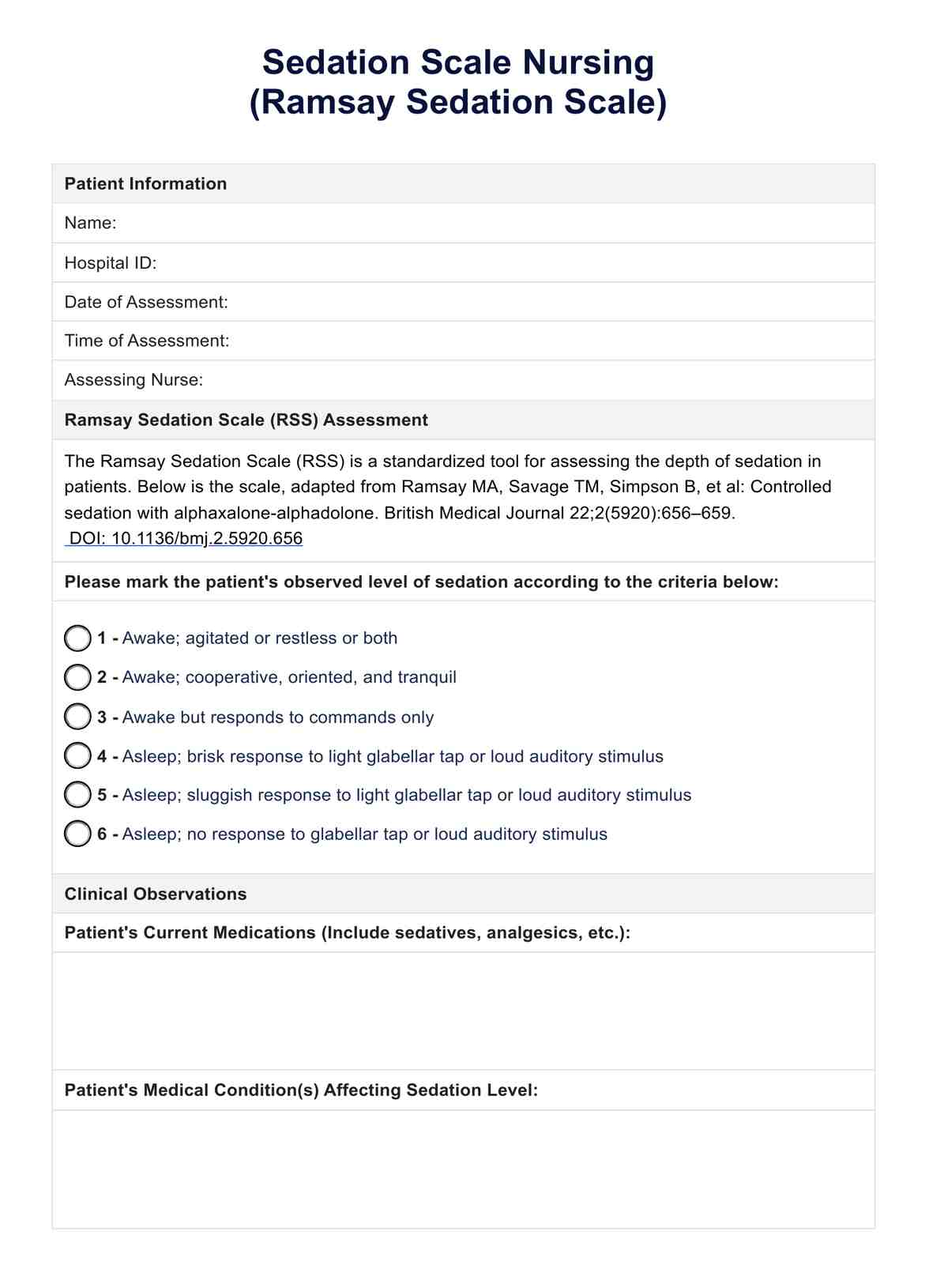Adjusting sedation levels in mechanically ventilated patients often involves using sedation protocols that include daily sedation interruption or targeted sedation levels based on sedation scales.

Sedation Scale Nursing (Ramsay Sedation Scale)
Discover key sedation scales used in nursing, including RASS and Ramsay Scale, for accurate patient sedation assessment in critical care settings.
Sedation Scale Nursing (Ramsay Sedation Scale) Template
Commonly asked questions
Sedation levels in hospitalized patients, especially those in critical care settings or undergoing specific treatments, should be assessed regularly. The frequency of assessments can vary based on the patient's condition, the type of sedation administered, and the clinical setting. Continuous monitoring is generally recommended for mechanically ventilated patients or those on continuous sedative infusions, with adjustments made to maintain optimal sedation levels.
Yes, sedation scales can be adapted for use in pediatric patients, although specific scales have been developed to cater to the unique needs and responses of children. Pediatric sedation scales consider factors such as developmental stages and non-verbal cues to assess sedation levels in younger patients accurately. Healthcare providers should select a validated scale for pediatric use to ensure the safety and efficacy of sedation in this population.
EHR and practice management software
Get started for free
*No credit card required
Free
$0/usd
Unlimited clients
Telehealth
1GB of storage
Client portal text
Automated billing and online payments











